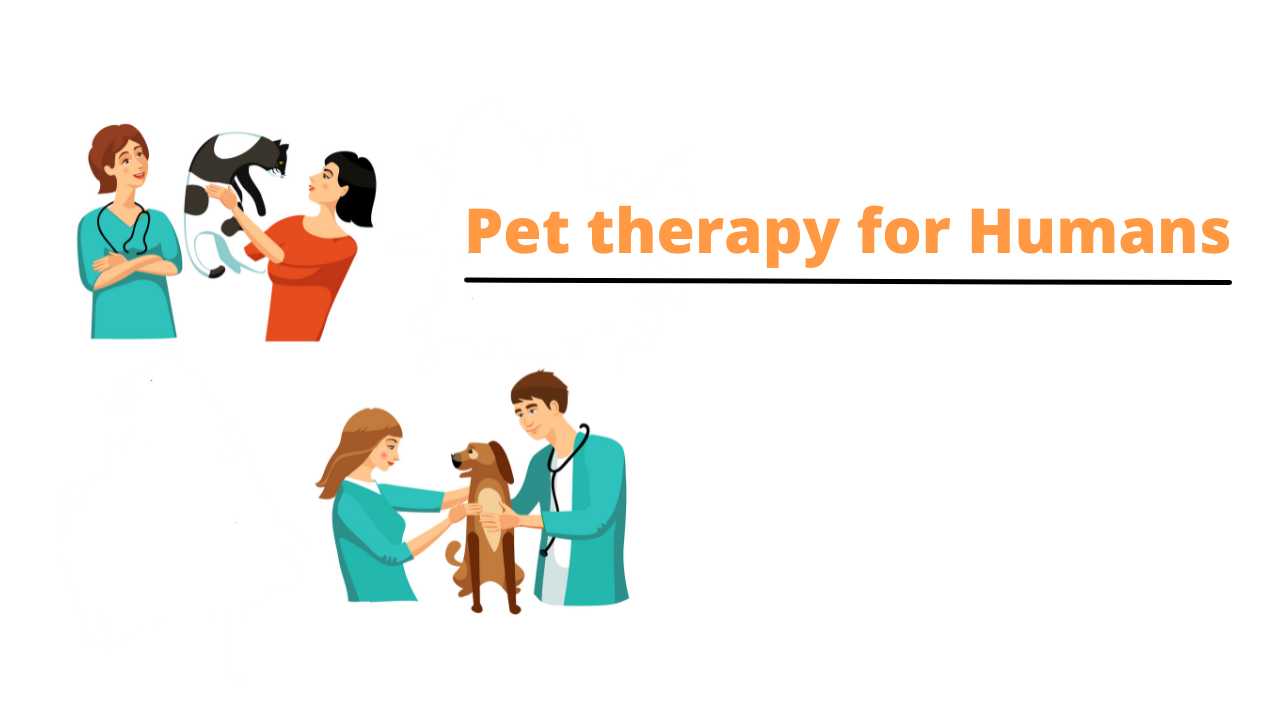Pet therapy for humans


We frequently discuss how much we do for our pets rather than how much they do for us. Yes, we put forth a lot of effort by feeding, walking, and cleaning up after them. However, they are amusing and make us laugh. To keep us company, they snuggle on the couch. They interact with us and play games with us. Simply said, they make us happy. Making someone feel good is a crucial task! Just ask anyone who has ever met a therapy animal.
What are therapy animals?
Animals that visit hospitals, retirement homes, hospice centers, nursing homes, and schools are known as therapy pets. Although dogs are the most common therapy pets, cats, rabbits, guinea pigs, and horses are all suitable. These adorable pets are well-behaved and well-trained.
What are some of the advantages of pet therapy?
Pet therapy is focused on the human-animal bond and consists of three components: the pet, the owner, and the patient. The goal of pet therapy is to make individuals feel better while helping them manage physical or mental issues.
Care facility residents are frequently stressed or depressed. Pet therapy improves self-esteem and reduces depression by stimulating three-way interaction between the patient, the pet, and the pet owner. This interaction is relaxing, reduces anxiety, and enhances the patient’s general mood.
Improved motor skills and movement (petting a cat is actually exercise! ), reduced isolation (having a furry friend is a great emotional boost), enhanced social skills and communication skills (pets are great social buffers and automatic conversation starters), decreased monotony and boredom (pets are entertaining), and improved overall emotional outlook are some of the specific benefits of pet therapy (pets make us happy). Furthermore, petting a pet releases endorphins, lowers blood pressure, and may benefit heart health.
What are the many kinds of therapy?
Pet therapy can be divided into three categories:
The most popular method of pet therapy is therapeutic visitation, in which owners bring their own pets to visit healthcare. Many hospitalized patients miss their pets, which they had to leave behind at home. A contact from a pet can encourage them to improve so that they can come back home to their own pets.
Animal-assisted therapy entails animals that have been carefully taught to assist physical therapists in their work with patients. Pets can help patients with limb movement and fine motor abilities by stroking their fur. Consider how such a play of fetch could aid a patient’s physical AND mental well-being!
Who should benefit from pet therapy?
Pet therapy can help people of any age who are suffering from physical, medical, or mental issues, whether they are long-term or short-term. Pet therapy benefits a diverse range of audiences, from chronic patients to more lively residents. The company of a pet is reassuring, engaging, and distracting to people of all ages! As a result, almost everyone can benefit from pet therapy.
Cancer patients receiving chemotherapy may welcome the presence of a pet through treatment sessions if their immune systems are in good shape. People suffering from post-traumatic stress disorder or other mental disorders may benefit from pet therapy. People with heart disease and hypertension may benefit from the lower blood pressure that comes with pet contact.
Who isn’t a good candidate for pet therapy?
Although pet therapy is beneficial, it is not for everyone. Some individuals simply despise animals, and being around one might make them feel even more stressed. Patients with weakened immune systems should avoid contact with pets at all costs, in case the pet is carrying any asymptomatic infectious diseases.
Are there any concerns about pet therapy’s safety?
Interacting with animals is generally a safe experience, although both people and animals can be unpredictable. The pet is the most significant aspect of pet therapy, but the owner is as crucial. Both require education. Dogs should be trained in obedience, and their owners should be able to control their pets. There are organizations with extensive experience in evaluating and training pet therapy teams.
Pets must be quiet and well-behaved. Unintentional injury can be caused by an overactive dog or cat jumping up on a patient. A patient’s physical and emotional well-being could be jeopardized by even a minor scrape. Owners/handlers of pets must also be friendly and engaged. Their presence provides residents with additional comfort. Many therapy groups link appropriate treatment teams with appropriate health care facilities.
Patients, on the other hand, must be careful with the animals. A small dog or cat can be injured if it is dropped. Squeezing a larger animal can be painful. To avoid issues, pets should be acclimated to conventional handling techniques such as massaging ears and patting heads. To protect the safety of all parties involved, the owner/handler should remain near to the animal.
Pets must also be clean and healthy! They are unable to introduce infections into the medical setting. Bathing and brushing dogs and cats can help to reduce dander, which can be a concern for allergy sufferers. All pets should be immunized and parasite-free, both internally (intestinal worms) and externally (fleas, ticks, lice, and mites).
Are service animals and therapy pets the same thing?
Therapy pets do not service animals, despite the fact that they are frequently registered as such. Service animals are companion animals who live with and support disabled people.
Therapy pets are typical pets who live with their owners. They pay visits to patients in hospitals but do not “belong” to any one person and are not particularly educated in providing aid. Therapy pets are an important part of health treatment since they assist both adults and children with a range of physical and emotional disorders. We put in a lot of effort for our pets, but they also put in a lot of effort for us. And therapy pets go above and above to make humans happy.





